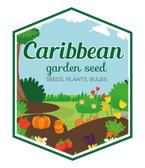
Artichoke Seeds - Purple Romagna
FAST & FREE SHIPPING
Over 90% of our orders are processed and ship out by next business day.
We are currently processing and shipping most orders within 1-3 business days. (backorders not included) Due to high demand during the peak months of January to May, orders may require additional time for packaging /shipment.
Free shipping for orders over $54.95. Excludes live plants, fresh products And Stackable Black Plastic Nursery Crate
Shipping and handling charges will cover outbound freight and packaging materials. Fees are applicable to all orders, based on total order value pre-tax. Expedited services can be selected at Checkout with extra fees.
- Free shipping to lower 48 states on orders $54.95+
- (Most Items), excluding live plants, plant bulbs, and black plastic nursery crate.
- Safe Seed Pledge
- Satisfaction Guaranteed
- Select your desired size and/or color from the available options.
Artichoke Purple Romagna (Cynara Scolymus) - Add a unique touch to your herb garden with the growth of Artichoke seeds. Dating back to the Greeks and Romans, these have been a staple for centuries. Native to the Mediterranean, these plants thrive in the wild and are now widely cultivated in the United States. Considered a tender perennial, they make a great addition to any garden.
- 1 oz - Approximately 630 Seeds
- 4 oz - Approximately 2,520 Seeds
- 1 lb - Approximately 10,080 Seeds
The edible portion of the plant is the large flower bud, and each plant produces several of the buds which are 2 - 5 inches across. The heart of the bud is very tender, and there are many wonderful methods of preparation that bring out the flavors of this gourmet herb.
Germinate seeds indoors 8-12 weeks before last frost. Plant them 1/4" deep, in 4" pots, and keep the seedlings at a temperature of 60-70 degrees. Once they grow several leaves, expose them to temperatures lower than 50 degrees F for at 12-20 days; this process, called vernalization, acts as a false "winter" that enhances the growing process. Transplant the seedlings outside two weeks after the last spring frost. Space them 48" apart in rows 64" apart. Direct sowing the seeds outside after last frost also is an option, though it takes the plants longer to mature. Artichokes can also be fall planted, especially in warmer climates, since artichokes thrive in cool weather.
Growing: Take care to keep the young plants moist at all times and surrounded with mulch, compost, or straw. If fungus begins to form because of too much humidity, cut back on the water, and remove the affected leaves at once. Buds should begin to form about 120 days after transplanting, depending upon the climate. To overwinter this plant in warmer climates such as zone 7 and above, cover it thickly with mulch. Prevent excess moisture, as this often causes artichokes to die over winter. In zone 6 and colder, it will be necessary to dig up the plants by the roots, cut the stem to 3", and store them with the roots protected in a cool place until spring. Replant them after the last frost.
Harvesting: If planted soon enough in the spring in warmer climates, artichokes might produce a small crop before fall. Harvest them before the petals of the choke begin to open, and the size reaches about 4". Cut the heads with about 3" of the stem attached. Use immediately for the freshest flavor, or keep refrigerated for up to five days.
To winter the Artichoke plants, cut them down to 8 - 10 inches and mulch them heavily. What grows next year will be offshoots of the parent plant.
Sowing: Stratify seeds by putting them in damp sand in the fridge for 2 weeks.
HOW TO GROW GUIDE
LET OUR CUSTOMER SPEAK FOR US

![[Seeds] - Caribbeangardenseed](http://caribbeangardenseed.com/cdn/shop/files/gift-card-gift-card-1_1024x1024_dfa857db-9150-4315-a362-7f0bb3fb9c47_60x28.png?v=1722895789)









